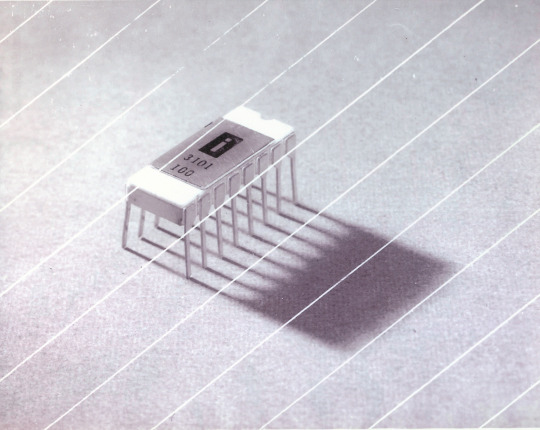Text
STOP SCROLLING

Your life ends in the wasteland.
55K notes
·
View notes
Note
Phil has a little mane! A lil neck ruff!
as @itsybitsydragon said today: the neck and head of a longhaired cat and the body of a shorthaired cat

15 notes
·
View notes
Text
well there's also the shadow realm
I have one of those robot vacuums but there's a mirror in the house low enough to the ground that the lidar scanner can see a nonexistent room in the reflection so on the navigation map it's generated I have a room that doesn't exist that I have to forbid the vacuum from entering.

#increase your living space with this one weird astral projection technique#real answer: this is not the whole house
7K notes
·
View notes
Text
Me: “You can’t ascribe human morality to non-human animals because they do not share our particular cognition and culture.”
Tumblr: “Why do you hate animism, huh? Why do you think humans are a separate species from other animals, you human supremacist?”
24K notes
·
View notes
Photo




so for writing this comic I DID SOME RESEARCH and it turns out the “batusi” dance that Batman does in the 60s show is actually a gag on a then-popular dance called the Watusi! this is a scandal - Batman took an existing thing that was ALREADY THERE and just added “bat” to the front of it! …Wait
138 notes
·
View notes
Text

I have one of those robot vacuums but there's a mirror in the house low enough to the ground that the lidar scanner can see a nonexistent room in the reflection so on the navigation map it's generated I have a room that doesn't exist that I have to forbid the vacuum from entering.

7K notes
·
View notes
Text
the thing about the three musketeers (book) is that there are three musketeers (guys) and also a fourth dude who's always hanging out with them and is part of the friend group. yet he is not one of the three musketeers
968 notes
·
View notes
Text
I guess it's time for a gunnerkrigg reread because I do not have a good timeline on the last few chapters in my head
also good chance to go through the retrospectives again
4 notes
·
View notes
Text
guess who made a wargame with thirteen thousand seven hundred and ninety-nine unit statblocks
3K notes
·
View notes
Text
Offhand a failed prediction from Omega was Shell not getting killed a few chapters back, the Bodhisattva guy saved her by doing magic which he wasn't supposed to do, and she said she knew she was meant to die there because of Omega, I think.
Main speculation in the gunnerkrigg comments is that the stranger is Omega. I don't know whether that's the case, but it's worth remembering that, contrary to what Kat and Anthony say about an "Omega device", the shadow men tend to talk about Omega as if it's a person.
To me Omega seems contradictory. The Court wants to achieve a world without magic, perfectly mechanistic and predictable, but their main hope for that is a Laplace's demon, which is just as mythological as Coyote? Not that I think it's a plot hole, just more reason to think the exposition so far isn't honest.
Another loose end here is Kat from the original timeline, the one where Antimony died, the first one to make Tiktoks. I guess she could be Omega, or she could be the original robot angel (perhaps the source of Robot's impressions that the angel is cruel?), or involved in some other way. Or not relevant at all.
20 notes
·
View notes
Text
the pandit who did the anti-bad-luck-because-you-were-born-wrong prayers for my brother was like yeah I made my children go into the careers that their star signs said they should, oh hey isn't it cool how those all happen to be like engineer and doctor and accountant. Funny how that works.
This is what you get with dilute diaspora levels of Hindu supremacy, the native stuff must be bonkers.
Every other week this website has some version of "Yes it is also bad when Hindu nationalists do X thing."
#truly you do not have to believe in magic it makes you worse#astrology is responsible for many incredibly intense neuroses#i was strong enough not to reply to that poll but I'm still mad!#caste shit is wild i had a schoolmate who was actually from India and he said bonkers things
865 notes
·
View notes
Text

is that good
8 notes
·
View notes
Note
The original Zilog Z80 line is finally being discontinued, end of an era, rip to a real one.
What are some of the coolest computer chips ever, in your opinion?
Hmm. There are a lot of chips, and a lot of different things you could call a Computer Chip. Here's a few that come to mind as "interesting" or "important", or, if I can figure out what that means, "cool".
If your favourite chip is not on here honestly it probably deserves to be and I either forgot or I classified it more under "general IC's" instead of "computer chips" (e.g. 555, LM, 4000, 7000 series chips, those last three each capable of filling a book on their own). The 6502 is not here because I do not know much about the 6502, I was neither an Apple nor a BBC Micro type of kid. I am also not 70 years old so as much as I love the DEC Alphas, I have never so much as breathed on one.
Disclaimer for writing this mostly out of my head and/or ass at one in the morning, do not use any of this as a source in an argument without checking.
Intel 3101
So I mean, obvious shout, the Intel 3101, a 64-bit chip from 1969, and Intel's first ever product. You may look at that, and go, "wow, 64-bit computing in 1969? That's really early" and I will laugh heartily and say no, that's not 64-bit computing, that is 64 bits of SRAM memory.


This one is cool because it's cute. Look at that. This thing was completely hand-designed by engineers drawing the shapes of transistor gates on sheets of overhead transparency and exposing pieces of crudely spun silicon to light in a """"cleanroom"""" that would cause most modern fab equipment to swoon like a delicate Victorian lady. Semiconductor manufacturing was maturing at this point but a fab still had more in common with a darkroom for film development than with the mega expensive building sized machines we use today.
As that link above notes, these things were really rough and tumble, and designs were being updated on the scale of weeks as Intel learned, well, how to make chips at an industrial scale. They weren't the first company to do this, in the 60's you could run a chip fab out of a sufficiently well sealed garage, but they were busy building the background that would lead to the next sixty years.
Lisp Chips
This is a family of utterly bullshit prototype processors that failed to be born in the whirlwind days of AI research in the 70's and 80's.
Lisps, a very old but exceedingly clever family of functional programming languages, were the language of choice for AI research at the time. Lisp compilers and interpreters had all sorts of tricks for compiling Lisp down to instructions, and also the hardware was frequently being built by the AI researchers themselves with explicit aims to run Lisp better.
The illogical conclusion of this was attempts to implement Lisp right in silicon, no translation layer.

Yeah, that is Sussman himself on this paper.
These never left labs, there have since been dozens of abortive attempts to make Lisp Chips happen because the idea is so extremely attractive to a certain kind of programmer, the most recent big one being a pile of weird designd aimed to run OpenGenera. I bet you there are no less than four members of r/lisp who have bought an Icestick FPGA in the past year with the explicit goal of writing their own Lisp Chip. It will fail, because this is a terrible idea, but damn if it isn't cool.
There were many more chips that bridged this gap, stuff designed by or for Symbolics (like the Ivory series of chips or the 3600) to go into their Lisp machines that exploited the up and coming fields of microcode optimization to improve Lisp performance, but sadly there are no known working true Lisp Chips in the wild.
Zilog Z80
Perhaps the most important chip that ever just kinda hung out. The Z80 was almost, almost the basis of The Future. The Z80 is bizzare. It is a software compatible clone of the Intel 8080, which is to say that it has the same instructions implemented in a completely different way.
This is, a strange choice, but it was the right one somehow because through the 80's and 90's practically every single piece of technology made in Japan contained at least one, maybe two Z80's even if there was no readily apparent reason why it should have one (or two). I will defer to Cathode Ray Dude here: What follows is a joke, but only barely

The Z80 is the basis of the MSX, the IBM PC of Japan, which was produced through a system of hardware and software licensing to third party manufacturers by Microsoft of Japan which was exactly as confusing as it sounds. The result is that the Z80, originally intended for embedded applications, ended up forming the basis of an entire alternate branch of the PC family tree.
It is important to note that the Z80 is boring. It is a normal-ass chip but it just so happens that it ended up being the focal point of like a dozen different industries all looking for a cheap, easy to program chip they could shove into Appliances.
Effectively everything that happened to the Intel 8080 happened to the Z80 and then some. Black market clones, reverse engineered Soviet compatibles, licensed second party manufacturers, hundreds of semi-compatible bastard half-sisters made by anyone with a fab, used in everything from toys to industrial machinery, still persisting to this day as an embedded processor that is probably powering something near you quietly and without much fuss. If you have one of those old TI-86 calculators, that's a Z80. Oh also a horrible hybrid Z80/8080 from Sharp powered the original Game Boy.
I was going to try and find a picture of a Z80 by just searching for it and look at this mess! There's so many of these things.

I mean the C/PM computers. The ZX Spectrum, I almost forgot that one! I can keep making this list go! So many bits of the Tech Explosion of the 80's and 90's are powered by the Z80. I was not joking when I said that you sometimes found more than one Z80 in a single computer because you might use one Z80 to run the computer and another Z80 to run a specialty peripheral like a video toaster or music synthesizer. Everyone imaginable has had their hand on the Z80 ball at some point in time or another. Z80 based devices probably launched several dozen hardware companies that persist to this day and I have no idea which ones because there were so goddamn many.
The Z80 eventually got super efficient due to process shrinks so it turns up in weird laptops and handhelds! Zilog and the Z80 persist to this day like some kind of crocodile beast, you can go to RS components and buy a brand new piece of Z80 silicon clocked at 20MHz. There's probably a couple in a car somewhere near you.
Pentium (P5 microarchitecture)
Yeah I am going to bring up the Hackers chip. The Pentium P5 series is currently remembered for being the chip that Acidburn geeks out over in Hackers (1995) instead of making out with her boyfriend, but it is actually noteworthy IMO for being one of the first mainstream chips to start pulling serious tricks on the system running it.

The P5 comes out swinging with like four or five tricks to get around the numerous problems with x86 and deploys them all at once. It has superscalar pipelining, it has a RISC microcode, it has branch prediction, it has a bunch of zany mathematical optimizations, none of these are new per se but this is the first time you're really seeing them all at once on a chip that was going into PC's.
Without these improvements it's possible Intel would have been beaten out by one of its competitors, maybe Power or SPARC or whatever you call the thing that runs on the Motorola 68k. Hell even MIPS could have beaten the ageing cancerous mistake that was x86. But by discovering the power of lying to the computer, Intel managed to speed up x86 by implementing it in a sensible instruction set in the background, allowing them to do all the same clever pipelining and optimization that was happening with RISC without having to give up their stranglehold on the desktop market. Without the P5 we live in a very, very different world from a computer hardware perspective.
From this falls many of the bizzare microcode execution bugs that plague modern computers, because when you're doing your optimization on the fly in chip with a second, smaller unix hidden inside your processor eventually you're not going to be cryptographically secure.
RISC is very clearly better for, most things. You can find papers stating this as far back as the 70's, when they start doing pipelining for the first time and are like "you know pipelining is a lot easier if you have a few small instructions instead of ten thousand massive ones.
x86 only persists to this day because Intel cemented their lead and they happened to use x86. True RISC cuts out the middleman of hyperoptimizing microcode on the chip, but if you can't do that because you've girlbossed too close to the sun as Intel had in the late 80's you have to do something.
The Future
This gets us to like the year 2000. I have more chips I find interesting or cool, although from here it's mostly microcontrollers in part because from here it gets pretty monotonous because Intel basically wins for a while. I might pick that up later. Also if this post gets any longer it'll be annoying to scroll past. Here is a sample from a post I have in my drafts since May:

I have some notes on the weirdo PowerPC stuff that shows up here it's mostly interesting because of where it goes, not what it is. A lot of it ends up in games consoles. Some of it goes into mainframes. There is some of it in space. Really got around, PowerPC did.
134 notes
·
View notes

